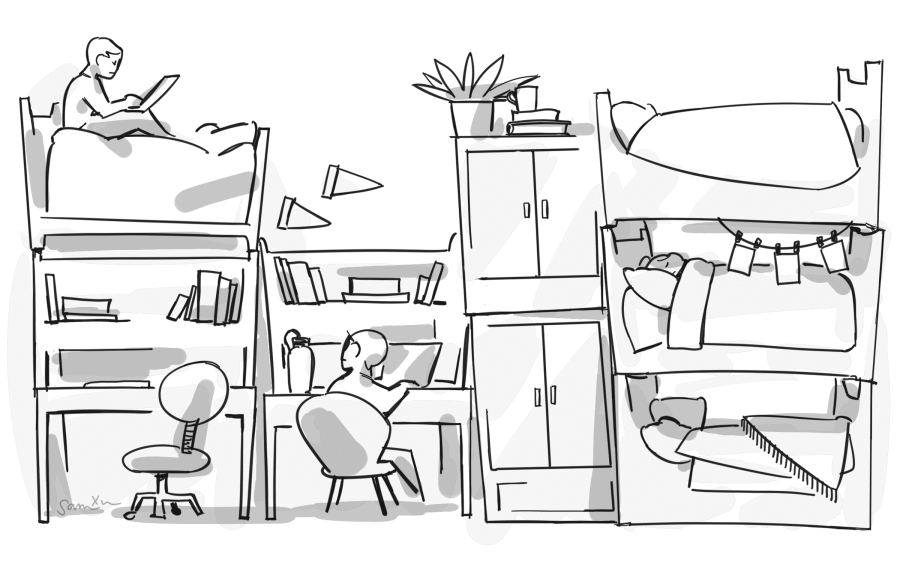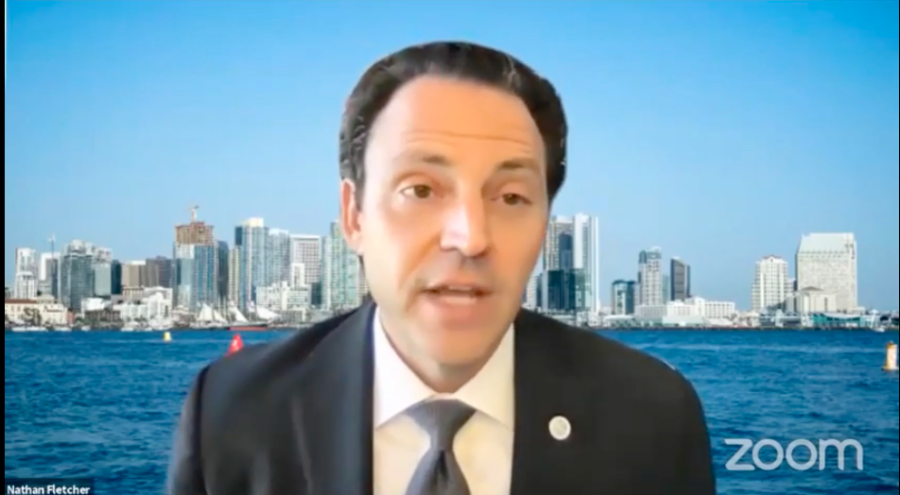Ever since UC President Janet Napolitano announced that the eight undergraduate campuses would enroll an additional 5,000 California residents this academic year — 750 at UCSD alone — students have prophesied the severe consequences this move would bring about. It was clear to us all that the UC campuses would not be able to meet the basic needs of such a large student population when the current population’s accommodations are already sparse.
We’re currently in a moment where some of our most pessimistic theories have come to fruition — overcrowded dorms, scarce off-campus housing and bus lines longer than the buses themselves. With UC administration adamant on doubling down by adding another 5,000 residents over the next two years — and the only official plan put forth is one to add 14,000 more beds by 2020 — it’s time they present and enact effective solutions to a problem. Students didn’t ask for housing shortages caused by administrative zeal, but they’re being forced to pay for it.
No Homes Left Behind
While the search for off-campus housing has always been a rough and relentless process — countless open houses, exorbitant application fees, sketchy Craigslist meetups — this past summer has been uniquely difficult for UCSD students seeking refuge from mini-doubles and converted triples.
As demand for off-campus housing has skyrocketed, so have prices. At La Jolla International Gardens, a residential hot spot for UCSD students, a two-bedroom apartment starts at a monthly price of $2090. Just a year ago, however, the same apartment cost $245 less at a reasonable rate of $1845 per month. Less than a block away at the La Regencia Apartments, the rental price of a two-bedroom apartment starts at an even more exorbitant $2450, whereas two years ago, it was approximately $1800. This extreme pricing surge represents an inflation rate well beyond that of other markets in the United States and, paired with tuition hikes, is plunging our student population into the housing crisis they knew was coming.
When UC San Francisco faced housing concerns — theirs stemming from San Francisco being one of the most expensive places to live — the university acted proactively. Starting a cost-of-living program, UCSF allowed students to apply for a need-based $2,400 supplement to cover housing and associated costs such as commuting. If UCSD were to adopt a similar plan, the university could help offset some of the increasing costs of off-campus housing.
Students, Time is Running Out
Undocumented students, many unable to receive federal and state aid because of their citizenship status, are put in a particularly difficult position. With many coming from lower-income families and a lack of fallbacks, there’s a financial strain that falls almost directly on the student. Without the ability to run a credit check — which requires a Social Security number — the application process at most complexes ends before it begins. Besides UCSD’s meager two-year housing guarantee, there are no assurances for a community that needs it. Although the Undocumented Student Services Center provides assistance by connecting students to fellowships, grants and other aid, it’s only treating the symptoms of the problem at hand.
Other UC campuses have managed to circumvent undocumented students’ housing issues by guaranteeing more than two years. UCSB guarantees four years, UCLA guarantees three years and 5 other campuses similarly guarantee two years. Located so close to the border, UCSD should be setting an example in terms of taking care of undocumented students, not lagging behind. Extending the on-campus housing guarantee for undocumented students is an overdue and necessary solution.
I Bed You Adieu
As part of the UCSD “Living Learning Neighborhood” plan, the university will build residential buildings with an approximate occupancy of 2,000 students atop the parking lot between Muir College and Thurgood Marshall College. While this is certainly a positive move in and of itself, it would merely mitigate the loss of housing in Sixth College that the construction of the UCSD trolley will bring about. Furthermore, with the building construction not set to be fully completed until spring 2021, the university lacks solutions that will benefit students now and over the next five years.
A common solution proposed in the face of college housing shortages is to subsidize off-campus housing. In doing so, UCSD would not only secure housing for students in need of it; the university would circumvent the years of construction required to create new residential buildings. But even then, it could take several years for UCSD to organize such deals with off-campus apartment complexes, rendering the idea more of a long-term goal than an immediate fix.
Another immediate option that could help students currently without a place to live is emergency housing. Under this system, the university would have ownership of several apartments that they could temporarily rent out to a student who is in need of housing, whether due to rent complications or any sudden lack of housing. This would be at an affordable rate and for a short period. In the meantime, a university-hired advisor would work with the student to secure a living space for the remainder of the year. A.S. President Daniel Juarez is currently considering this type of plan in efforts to address the expansion of affordable housing for UCSD students.
These are the kinds of ideas that need to be implemented, or at the very least discussed, in the very near future. Without them, housing-insecure students will continue to carry an unnecessary and unfair burden that is preventing them from focusing on their education. The university must act swiftly and forcefully to stop this housing crisis.
Correction: An earlier version of this editorial stated that UCSD offers a one-year housing guarantee. It has since been updated to reflect that the university offers a two-year guarantee.













come on guardian • Oct 9, 2016 at 12:10 pm
ucsd has a two-year housing guarantee